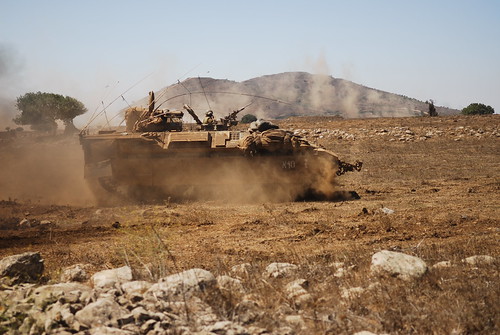
The battle on June 6 between rebel groups and the Syrian army over Kuneitra, the border town on the northern Golan Heights that straddles the Israeli-Syrian disengagement line, is yet another indication that the Syrian civil war is slowly but surely drawing Syria’s neighbors into its orbit. While the Syrian-Lebanese border zones are where this has been particularly manifested through cross-border skirmishes, transfers of arms, crossing of combatants, and flights of refugees, the battle over Kuneitra and previous cross-border incidents indicate that Israel is increasingly drawn into the war as well. Not coincidently, it is at the Syria-Lebanon-Israel tri-border region where this cross-border leakage is becoming most volatile.
Since the Israeli withdrawal from South Lebanon in 2000, the Syria-Lebanon-Israel tri-border region has been extremely explosive. The UN, which in 2000 demarcated the Israeli line of withdrawal from South Lebanon, has attempted to defuse tension there related to Lebanon’s territorial claim over the Shebaa Farms and the village of Ghajar and Hezbollah’s military operations in this area as part of its “resistance” strategy against Israel. These border disputes are now overshadowed by the daily battles, human catastrophes, and the political predicaments of the civil war.




